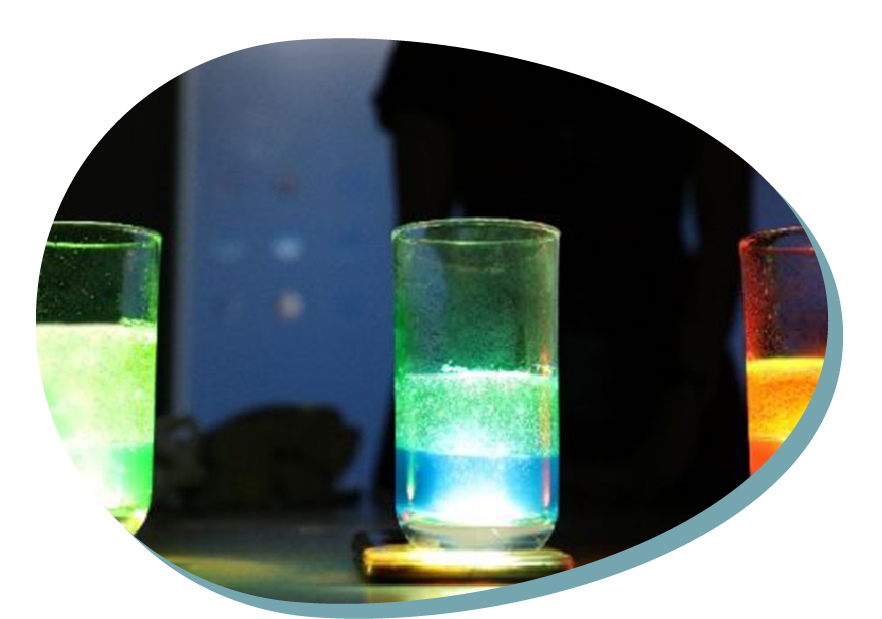Homemade Lava Lamp with Alka Seltzer
Type of resource: Website
Language: English
Description
Experiment investigating mixing in liquids.
Scientific concept introduced
Chemical reactions: liquids do and don’t mix; dissolving.
Creative and critical thinking
Critical Thinking
Analysis
Inductive reasoning
Creative Thinking
Design
Mathematical reasoning
Counting
Sequencing
Scientific thinking
Observing
Questioning
Prediciting
Recording
Analysising
Learning how to learn
Being organised
Turn taking in groups
Fun in learning
Additional
Oral language – listening and following instructions
Hand-eye coordination
Fine motor skills
Pre-reading skills eg sequencing
Collaborative skills through group Work
Homemade Lava Lamp with Alka Seltzer
Overall aims
To enable pupils to explore how liquids that do and don’t mix
To enable pupils to explore the concept of dissolving
To develop pupils’ skills in listening and following instructions
To develop pupils’ organisation skills
To develop pupils’ communication skills
To develop pupils’ skills in observing and predicting
To develop pupils’ skills in counting
To develop pupils’ skills in recording
Vocabulary – keywords should be understood
Food colouring, vegetable oil, water, tablet, bubbles, lighted, heavier, dissolves, mix
Expected learning outcomes (operational aims)
The child will be enabled to:
– follow instructions of an experiment
– investigate how water and oil react
– observe and discuss how some liquids mix and some don’t mix
STEM skills – to which the learning unit is related to
CORE STEM SKILLS
Asking questions
Investigating
Observing and making predictions
Analyzing the results of an experiment
Counting
Recording
ADDITIONAL SKILLS
Hand-eye coordination
Fine-motor skills
Writing
Reading
Oral Language
Following rules of safety
Group work
Teaching methodologies/activity outline
Introduction
Show a bottle of food colouring as ask pupils if they know what it is used for. Elicit that it is a liquid which is used to colour food and it does so by mixing with other materials.
Inform pupils that they are going to investigate how other liquids mix.
Activity
Ask pupils to work in groups, each group using a different spice to make their own dough ball.
Materials
– Drinking glass or clear bottle
– Water
– Food coloring
– Vegetable oil
– Alka Seltzer tablet
Instructions
Put one drop of a food coloring into a glass.
Fill ¼ of the glass with water.
Sample question: What happened? Both liquids mixed.
Add about twice as much vegetable oil as water to the glass.
Sample Questions: What happened when you poured the oil into the water? Did the liquids mix? Did you notice that the two liquids did not mix?
Teacher Note: They separated because the density of water is greater than that of vegetable oil, and so the water sits at the bottom.
Drop one Alka Seltzer tablet into the bottle and look on as colorful bubbles ooze up and down through the oil.
Sample Question: What do you think will happen when you drop in the tablet?
Teacher Note: The tablet dives to the bottom and dissolves. This process creates carbon dioxide, which (like the oil) is lighter than water, causing it to form bubbles, with some of the colored water mixed in, that rise to the top and burst on the surface. After the mini explosion, the colored water sinks back down to the bottom, resulting in that oozing, lava-like effect in the bottle. Discuss the tone of colours to be seen in the glass.
Tip: For added effect, turn off the lights in the room and place the bottle on top of your mobile phone with the flashlight turned on. This makes the coloring really pop!
Conclusion
Ask pupils in small groups to recall the various steps in the experiment.
Ask each group to record what happened on poster paper, drawing each step on.
Ask pupils to use fabric and various materials for their poster to show the appearance of the mixture at the various stages.
Assessment of learning
Pupil observation sheet.
Equipment and materials to be used in learning unit (tools, ingredients etc)
– Drinking glass or clear bottle per group
– Poster paper
– Fabric, fibre and various art materials
Kind of setting
Kitchen or classroom with cooking facilities (ie hot stove)
References – source
Homemade Lava Lamp with Alka Seltzer
1. Usefulness for STEM education – integrating content of different disciplines
Cross-curricular character of the resource

The range of S-T-E-M subjects included

The presentation of possibilities of including artistic activities (STEAM approach)

2. Expected learning outcomes
Consistency (links) with preschool core curriculum

Communicativeness of description

3. Methodology of teaching
Clarity, communicativeness of instructions for teachers

Meaningful learning – using practical life problems

Original idea

The level of ease in implementing the methodology to preschool age children

The level of ease in preparing necessary ingredients, materials and equipment needed

4. Sustainability
Ecological characteristics of materials/ results

Supporting healthy eating habits

Low ecological footprint

Possibilities of inclusion (respecting cultural diversity and food intolerances)

5. Class management
Using differentiated forms of work – individual, team work etc.

Individual work

Team work

Whole group
6. Time management

Short activity (10-15 minutes)

Medium activity (20-30 minutes)

Long activity (1 hour or more)

Very long activity (1 day or more)
PDF: https://www.printfriendly.com/p/g/JTunDB

